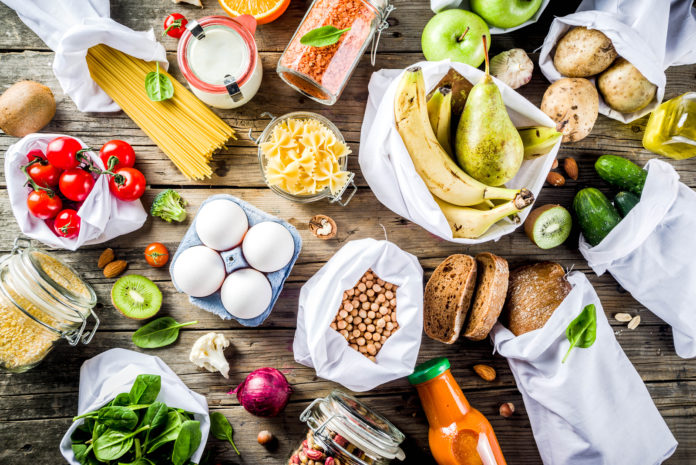
In the fifth annual announcement of its kind, Whole Foods Market tapped into the expertise of more than 50 of its team members to anticipate the biggest food and beverage trends of 2020. Some of these predictions may come as no surprise, but they might inspire new products, practices, and flavors as we head into the new year.
Regenerative agriculture
Transparency is still a hot topic in the industry, and that’s likely to continue well into 2020. Consumers want to know the stories behind their food, and that’s not limited to where it comes from and how it’s processed. It also involves practices like regenerative agriculture.
Whole Foods describes regenerative agriculture as “farming and grazing practices that restore degraded soil, improve biodiversity, and increase carbon capture to create long-lasting environmental benefits, such as positively impacting climate change.” Brands that are backed by such agricultural methods may see a growing fan base in the months ahead.
A field of flours
The bakery aisle is heating up with a wealth of flour options. Fruit and vegetable flours (like banana and cauliflower), tigernut flour, and seed flour blends could be fueling experimental baking next year. And the inclusion of “super” flours will add more fiber and protein power to the mix.
West African-inspired flavors
When it comes to taste, Whole Foods predicts more consumers will be reaching for foods inspired by the earthy and traditional dishes of West Africa. Many of these recipes have a base of tomatoes, onions, and chili peppers, with added flavoring from peanuts, lemongrass, and ginger. For their West African offerings, food companies are seeking out superfoods like moringa and tamarind, as well as uncommon cereal grains like sorghum, fonio, millet, and teff.
Snacking gets chilled
Busy lives have led to the growth of convenient, grab-and-go meals and snacking options. But a desire for freshness is taking this trend from the shelves to the refrigerated section — a move that’s bringing more foods like eggs, dairy, fruits, and vegetables to single-serve packaging.
Plant-based, without the soy
Soy is no longer the go-to plant-based protein, especially as brands seek to reduce common allergens in their product lines. Whole Foods anticipates the rise of “no soy” products that include ingredients such as mung beans, pumpkin, avocado, hempseed, watermelon seed, and golden chlorella.
Some of those ingredients may soon find their way into butters and spreads, too. If there’s a food that hasn’t been made into a spreadable topping yet, 2020 may be the year, especially for the purpose of expanding vegan-, paleo-, and keto-friendly options.
Mixing meats with plants
We’ve seen both meat and meatless burgers, but how about a burger made from a beef-vegetable blend? A win for both companies and consumers, mixing plants into ground beef cuts down on costs and reduces fat and cholesterol content. It’s an option that’s sure to appeal to flexitarians, or anyone looking to boost their burgers with nutritional benefits.
Inspiration for this trend comes from The Blended Burger Project, a movement with a mission to improve upon burger recipes with the addition of at least 25% fresh mushrooms.
The next generation of foodies
The kids’ menu could soon be getting a makeover. Healthier versions of classic favorites like pasta, pizza, and chicken nuggets are being formulated with alternative flours and simple, organic ingredients. And for kids who want to walk on the wild side, we might see more children’s foods with fermented, spiced, and exotic flavors.
Sweetened with sugar substitutes
If you want to pull the sugar from a recipe, you’re no longer limited to substitutes like stevia, honey, and maple syrup to keep things sweet. Pomegranate, monk fruit, coconut, dates, and even starches like sorghum and sweet potato are finding their way into sugar replacements, offering new flavor experiences.
Unique drinks, minus the alcohol
The distilling methods, cocktail flavors, and packaging often reserved for alcoholic beverages are finding their way into the non-alcoholic section. Martinis made with botanical-infused faux spirits, hops-infused sparkling waters, and zero-proof aperitifs are some of the drinks we could see more of in 2020.








